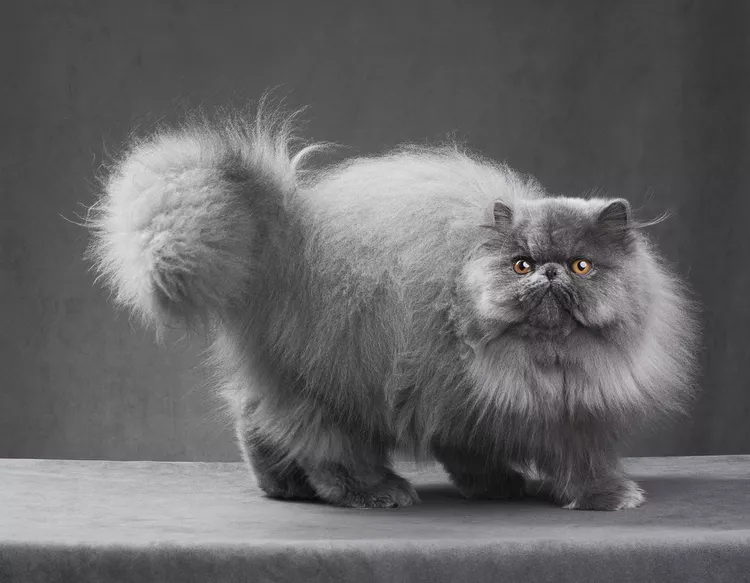
The Persian cat has been cherished for hundreds—if not thousands—of years, tracing their origins to the deserts of Persia and Iran. The Persian cat is a medium- to large-sized breed, easily identifiable by their round, flat face and long, flowing coat that comes in almost every color. Persian cats are gentle, loving companions even if their face makes them look a little grumpy.
Learn more about the characteristics, care, and history of the Persian cat.
PERSONALITY: Sweet, gentle, and affectionate
WEIGHT: 7 to 12 pounds
LENGTH: 14 to 17 inches
COAT LENGTH: Long hair
COAT COLORS: Blue, black, white, red, cream, chocolate, lilac, silver, golden
COAT PATTERNS: Solid, tabby, tortoiseshell, bicolor
EYE COLOR: Copper, blue, green, blue-green, hazel and odd-eyed
LIFESPAN: 15 to 20 years
HYPOALLERGENIC: No
ORIGIN: Persia and Iran
The Persian cat is known and loved for their very sweet, gentle, calm disposition. Though Persian cats are quite friendly, they require gentle handling, which means no roughhousing or grabbing from young children. They get along great with kind, respectful kids, but would rather be stroked and admired than engage in strenuous activities. Persians also enjoy the company of other cats and gentle dogs if they are introduced properly.
Persians love to sprawl out in their favorite spot in the home with good vantage points to keep an eye on the goings-on in the household, be it a plush chair or atop a cat tree. Persians are homebodies. It’s best to keep them indoors to prevent overheating or tangling up their profuse, long coats. Persian cats love their human families, but they don’t mind being left alone for short periods of time as long as they are in their own homes where they feel comfortable and safe.
The earliest written history of the Persian cat dates back to the early 1500s, but some breed fanciers believe the Persian might be even older. According to the Cat Fanciers' Association, ancient hieroglyphs found in the region show longhaired cats that may have been the ancestors of what became the Persian cat breed. The earliest examples of what eventually became the Persian cat were exhibited at the very first cat show, which took place in London in 1871.
Queen Victoria became enamored with the breed and owned several Persian cats, which made the breed popular with other royals and the British upper class. The breed found their way to the United States in the late 1800s and early 1900s. As in England, the Persian won over the American people.
The Persian was recognized by the Cat Fanciers' Association (CFA) in 1906 as one of the foundation breeds. The International Cat Association recognizes the Himalayan, which has a light-colored body and darker “points” of color on the face, ears, legs, and tail, as a separate breed within the Persian breed group. In the CFA, cats with Himalayan coloration are judged with the rest of the Persian colorations.
Persians are fairly easy to care for in terms of exercise and mental stimulation (a few play sessions a day will do just fine), but their coat requires extensive care and is not for the faint of heart. If not properly cared for, the Persian's coat can form mats, which are extremely painful for cats.
The Persian cat’s luxurious, flowing coat requires a lot of grooming—perhaps the most in all of the cat kingdom. To prevent mats from forming, a Persian cat needs daily combing with a wide-toothed metal comb, followed by daily brushing with a soft slicker brush. When combing, Persian cat parents must take care to part the hair and ensure they are combing all the way down to the skin, or mats will sneakily form underneath the long hair.
Regular bathing is necessary to keep the coat clean. After a bath, the coat should be carefully dried with a pet hair dryer that runs cooler than a human hair dryer so you don’t burn your cat’s sensitive skin or cause them to overheat. Persian cats also need their faces washed daily (the large, round eyes are prone to tearing), their nails trimmed weekly or every other week, and their ears checked and cleaned if they become dirty.
Due to the difficulty of upkeep, some Persian cat parents opt to have their cats professionally groomed. The groomer can shave a Persian cat’s belly to take off some bulk and eliminate the issue of mats forming on the stomach and under the armpits. Another option is a lion trim: the body of the cat is shaved short, leaving fluffy hair on the head, legs, and tail.
Persians are fairly sedate cats, though they enjoy playing with feather wands or other teaser toys. Engaging your Persian cat in play sessions a few times a day can provide a bit of exercise to keep your cat physically and mentally stimulated.
Scratching is another physically engaging activity that cats naturally want to do. Encourage scratching in the right places by setting up approved scratching areas in your house. Be sure to use both vertical scratchers (such as tall posts or cat trees) and horizontal scratchers (such as cardboard or sisal scratchers that lie flat on the ground), because these can provide an outlet for your cat to scratch in different ways.
Persian cats are genetically predisposed to the following conditions:
Reputable Persian cat breeders have their adult cats screened for these problems prior to breeding to keep from passing unwanted health traits to the next generation.
The Persian is a medium-to-large-sized cat with short, muscular legs, a short back, sturdy body, and a deep chest. The Persian cat is immediately recognizable by their flat face with full cheeks, a short muzzle and a short snub-nose, round cheeks, a firm chin, medium-sized ears, and large, round eyes, creating a sweet expression.
The Persian cat’s coat is extremely long with a dense undercoat that provides a lot of volume. The Persian cat comes in many different colors and patterns. Patterns include tabby, tortoiseshell, solid, and bicolor. Colors include black, white, blue, cream, red, lilac, silver, golden, and chocolate.
Because the Persian cat is heavily built, the breed may become overweight if allowed to eat too much. For all cats, staying lean is healthier and can prevent obesity-related health issues like diabetes and heart disease.
To manage your Persian cat's food intake, feed measured meals twice a day instead of filling up the food bowl all the time (a practice called free feeding). Young kittens should eat three times a day. If you’re not sure what to feed or how much food your Persian needs daily, talk to your veterinarian or breeder for advice.
Also, Persians might have problems eating if they have a misaligned jaw—they might have trouble grabbing food and chewing it. Talk to your vet about specialty kibble and a water fountain for these cats.
Purebred Persians are expensive, with breeders often charging $1,000 or more.
The Cat Fanciers Association and The International Cat Association both list active Persian cat breeders on their respective websites.
You can also find adult Persian cats in animal shelters and through cat rescue groups if you would rather rescue a cat. Local Persian cat breeders might also know of someone looking to re-home their adult Persian.
Happiest when at home, the Persian cat is neither needy nor aloof, but a mixture of quiet affection and calm independence. Persians tend to be fairly quiet, but when they vocalize, they have sweet, musical voices. They love to cuddle or hang out next to you and will happily greet you at the door when you come home.
If you like the Persian cat, you might also like these cat breeds:
Persian cats make great pets because they are gentle, sweet, friendly, and calm. They are affectionate, can get along with respectful kids and other pets, and are fun to watch when they play.
Yes, Persian cats are expensive. Many breeders charge $1,000 or more for a purebred Persian kitten.
Persian cats love to cuddle and be near their family. Their long coats make them especially great for snuggle time!

Cute Pictures & Facts About Calico Cats & Kittens
Learn fascinating facts about calico cats, including photos, the genetics behind this color combination, and common folklore and traditions.
How to Prevent Cat Separation Anxiety During Vacations
Discover why cats develop litter box problems and cat behavior problems when you go on vacation and what you can do about it to help them.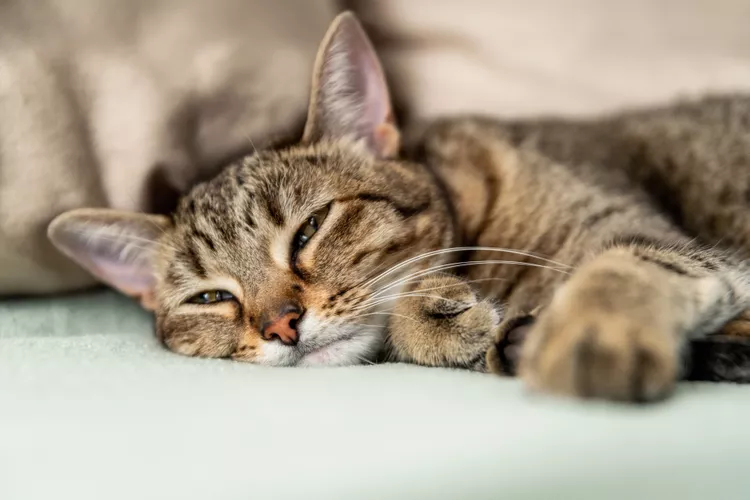
Cat Behavior Changes That Might Mean Something's Wrong
Cats' behavioral changes may indicate problems—or they may mean nothing at all. Explore causes of odd behavior and what to do about them.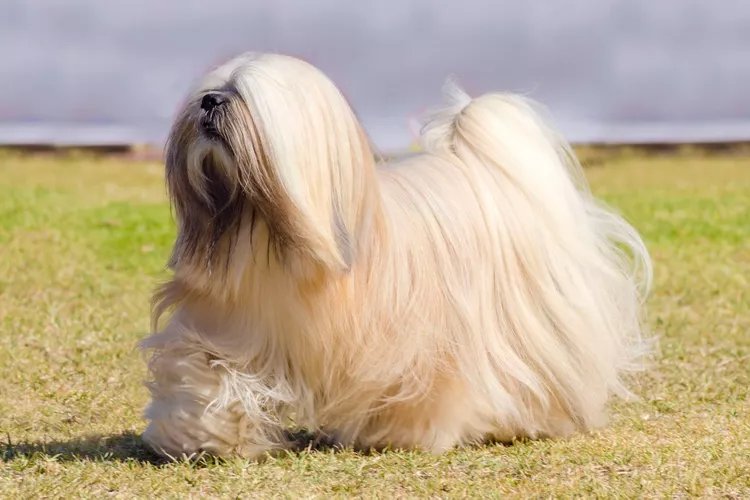
Lhasa Apso: Dog Breed Characteristics & Care
The Lhasa apso is an ancient breed from Tibet that was bred to be a watchdog. Learn about its history, health, exercise needs, and more.
Reasons Why Dogs Run Away and How to Stop It
Dogs can escape, especially if they’re bored and not properly contained. Here are some techniques for stopping your dog from running away.
Can Dogs Get Depression? How to Help Your Sad Dog
Can dogs get depression? Learn about the signs of depression in dogs and find out how to help your sad dog.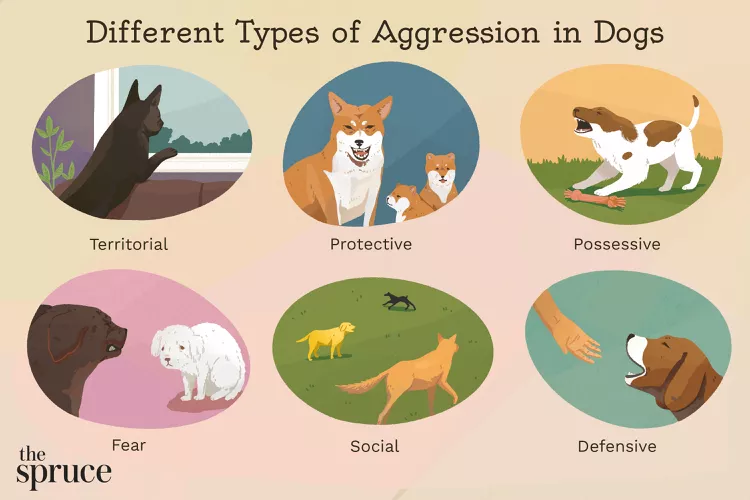
How to Stop Aggression in Dogs
Dog aggression can be a serious behavior issue for pet owners. Learn how to stop aggression in dogs before someone gets hurt.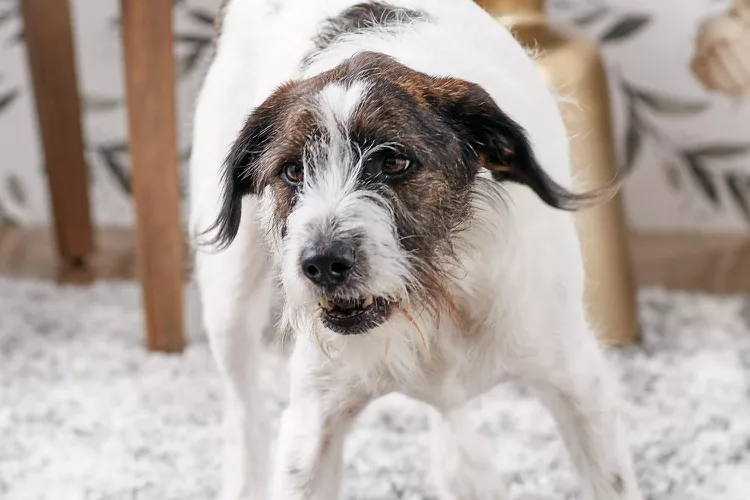
How to Stop Your Dog From Growling
A growling dog can soon become even more aggressive. Reduce the noise and potential for a dangerous situation with some of these techniques.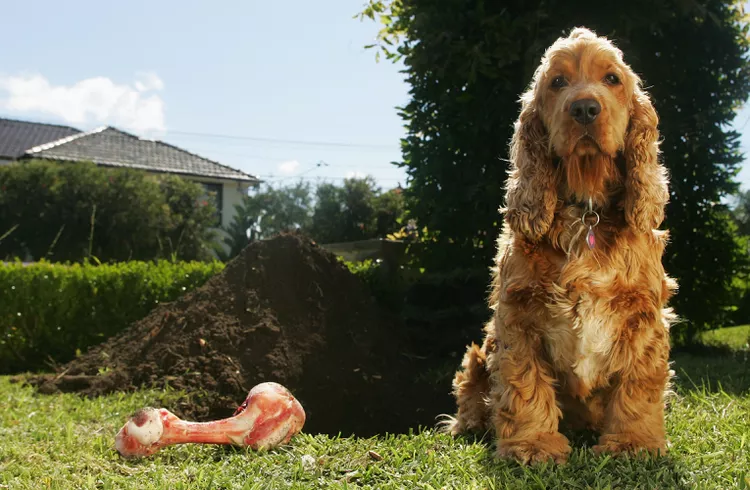
Why Do Dogs Dig Holes? How to Stop Your Dog from Relandscaping Your Yard
Dogs have been digging holes for centuries and for many reasons. Whether they’re bored or want to cool off in the dirt, here are the top reasons why dogs dig holes.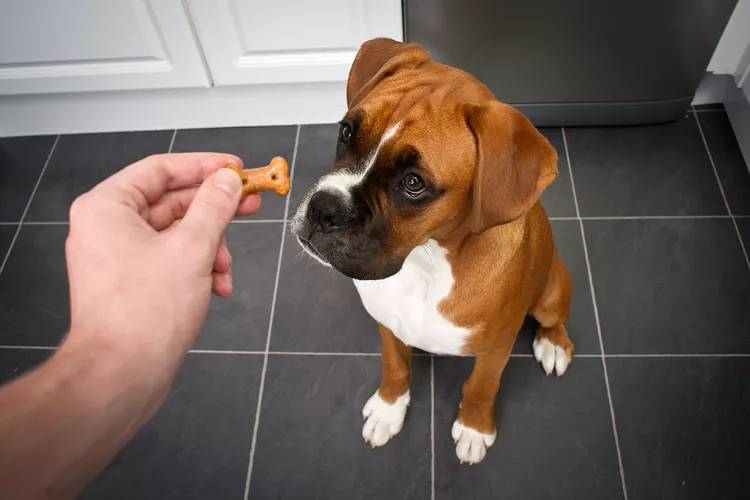
Dog Treat Varieties
Learn about the different types of dog treats on the market and decide which are best for your dog.
Can Dogs Eat Asparagus?
Dogs can eat asparagus, provided the vegetable is cooked plain and cut up for them. Seasonings, salt, and butter make it unhealthy for dogs.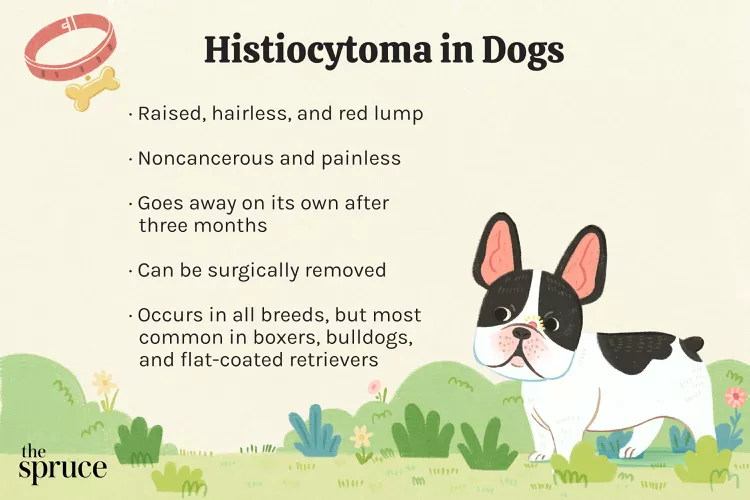
Histiocytomas in Dogs
A histiocytoma is a type of benign (non-cancerous) skin lump that usually affects young dogs. Learn the causes, treatment, and prevention.
Why Is My Dog’s Eye Swollen?
If your dog's eye is swollen, she may need veterinary attention. The inflammation could be caused by allergies, an injury, or even a tumor.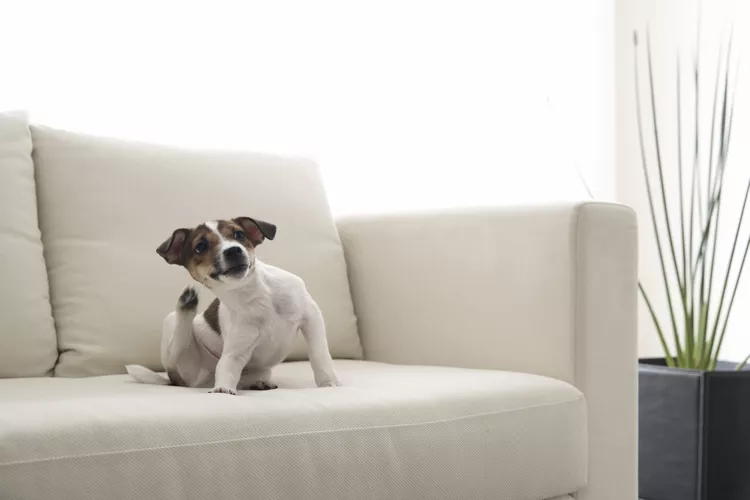
Common Bugs and Parasites Found on and Inside Dogs
Learn about common types of parasites in dogs. Find out how to treat and prevent parasites to keep your dog, your family, and yourself safe.
Exploring the Different Types of Pet-Friendly Beaches
Are you looking for pet-friendly beaches? Learn about the different types of pet-friendly beaches, their locations, and tips for visiting them with your pet.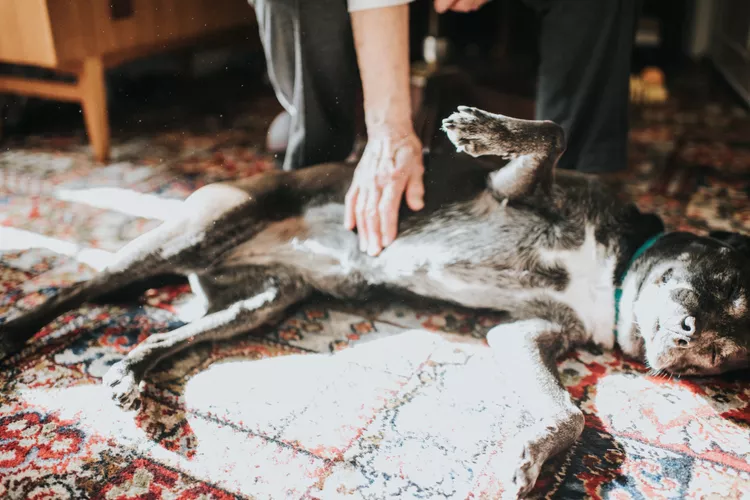
10 Obscure, Little-known Canine Facts in Honor of National Dog Day
With National Dog Day upon us, it's time to celebrate everything about our favorite pets—even the weirder stuff. Here are 10 obscure facts about dogs you probably didn't know.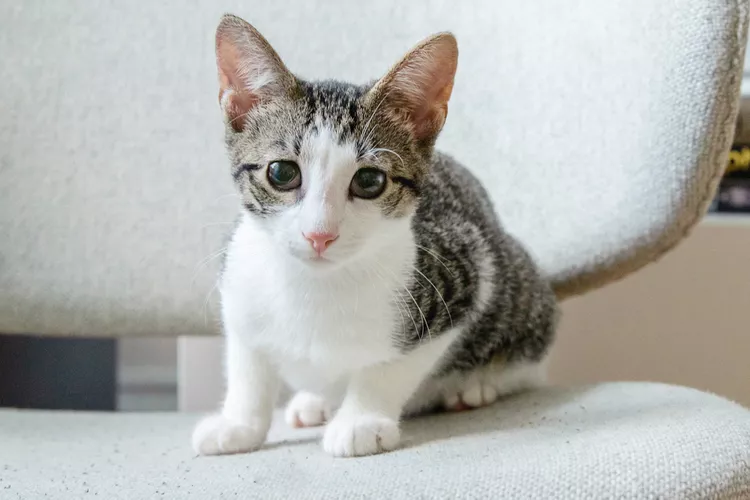
Kitten Development From 3 to 6 Months Old
Kittens grow and change a lot during their first year. Find out what happens between the ages of three months and six months old.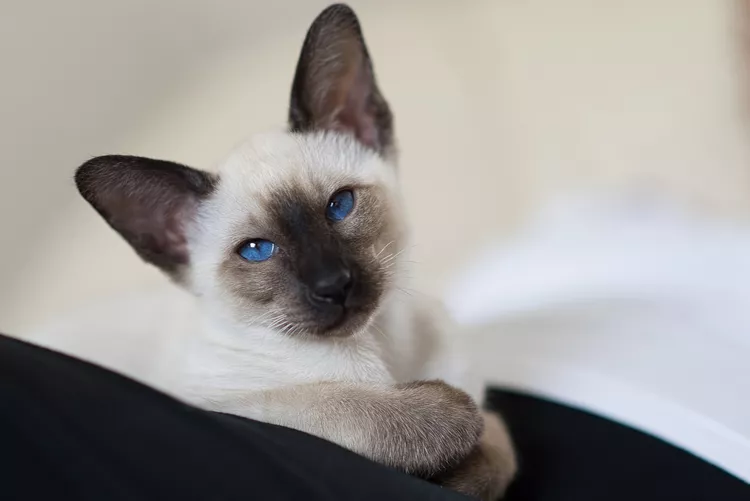
95 Siamese Cat Names
Our list of Siamese cat names has diverse and fun options to help you choose the ideal moniker for your elegant and lovable feline companion.
What to Buy for Your New Cat: A List of Essentials
Before you bring your new cat or kitten home, there are a number of things to collect or buy so your cat will feel welcomed like a family member.
The 6 Best Cat Nail Clippers of 2024 for a Safe Trim
Clipping your cat's nails can save your furniture and keep your kitty comfortable. We asked veterinarians for their cat nail clipper recommendations.